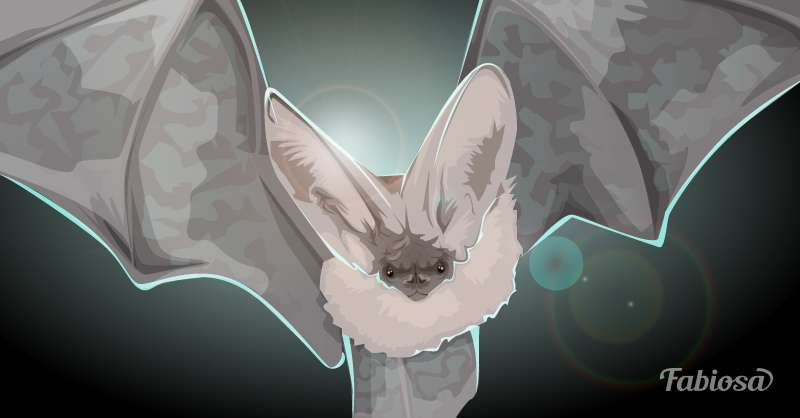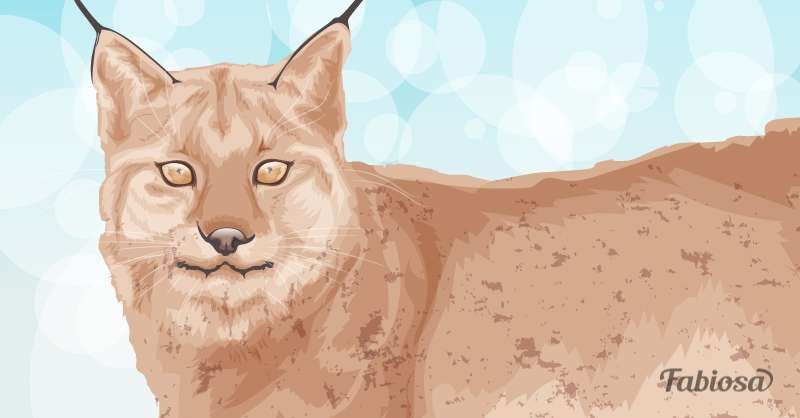Dangers In The Countryside: Wild Animals You May Encounter On Summer Holidays

ANIMALS
Dangers In The Countryside: Wild Animals You May Encounter On Summer Holidays
25 K
In the summer, many people leave the cities and go to country houses to spend some time in nature. Although it may seem perfectly safe there, remember that wild animals can be drawn to villages by warmth and food. You can face a wild animal any time, so you need to be prepared for this encounter.
Wild animals can attack humans first in one of the following cases:
- it is a mother protecting her cubs;
- the animal is wounded;
- the animal has rabies;
- people trigger the attack themselves.
via GIPHY
Most common of the uninvited guests to visit a country house or a camp are these 8 species of dangerous animals and birds. An expert zoologist will tell you more about them and also will instruct on how to behave in case of the unexpected meeting.
Whom can you meet at a country house?
Among all representatives of fauna the most likely ones to drop by a suburb or a village are: hedgehogs, snakes, bats, raccoons, skunks, foxes, lynxes, and owls. You should be very careful with each one of them. You can protect yourself and your family when you know how to behave, as well as exactly why they are dangerous.
1. Hedgehogs

Since hedgehogs live near people’s houses, as well as in the forests, many people try to feed them. People think that they can catch snakes and mice. In fact, they do it only in case of emergency, as they mostly prey on insect pests, which gained them such a respect among farmers. Usually, hedgehogs prefer shaded areas with a lot of bushes. If you want to feed a hedgehog, you can leave little reservoirs with water, meat or dog food for it in a secluded spot. Don’t give it milk – it causes intestinal disorders in hedgehogs.
via GIPHY
It is strictly not recommended to touch these animals for at least three reasons:
- Quills prevent hedgehogs from keeping their bodies clean, and with time it gets infested by parasites. Even a slight scratch can cause skin inflammation – it needs to be immediately treated with antiseptic.
- Parasites are carriers of dangerous diseases. That’s why a hedgehog can infect you with encephalitis, Lyme disease, and rabies.
- These creatures are quite aggressive and can painfully bite, causing a serious abscess.
Don’t try to drive a hedgehog away – just try to avoid touching it, and don’t take it in your hands. Warn your children and relatives about the possible danger.
2. Snakes

The warm season, May to September, is the peak activity of snakes. As they are very thermophilic, you can meet them in rocks, stumps, tracks, and sometimes in haystacks or in piles of construction materials. A snake can attack a human if you catch it off guard, disturb it. Remember that you need to stay calm – your movements should be easy and smooth. It is better to wait for it to leave first. To avoid the undesirable encounter try to walk louder so that it can find a quieter place.
In case of a snake bite, you need to monitor your general state. These signs will indicate that it is venomous:
- skin redness;
- temperature increase;
- a headache;
- nausea.
In this case, there is no need in trying to suck the venom out of the wound – this method is effective only in a few seconds after the bite. Instead, apply a tourniquet above the wound and seek medical help immediately.
via GIPHY
In order not to have snakes on your property:
- mow the lawn regularly;
- remove garbage and other objects, in which they can presumably hide;
- get rid of rodents, which snakes prey on;
- use special repellents.
3. Bats

Bats are not only usual inhabitants of villages, you can often see them in a city as well. Not all of them are predators, some species prey on insects, other eat plants, and still others – crawlers or birds, while all of them are mostly night creatures. As for their benefits, bats exterminate vermin that plague gardens and farms. Usually, they seek warmth in houses, and you can discover them settle in your summer house after a winter. Don’t be afraid of bats – contrary to popular belief, they don’t pose any threat to humans. If you found this creature, open the windows and let it fly out on its own, or put on a pair of thick gloves and remove it (don’t take it with bare hands).
4. Raccoons

These animals fall into the category of predators, and they are most commonly encountered in Europe and North America. They have well-developed fingers on their short front paws – they can grip and hold objects firmly, as well as wash their food in water. Despite the fact that raccoons are immune to a large variety of infectious and invasive diseases, they can be carriers of these diseases. These creatures are quite aggressive – they actively defend against other predators, ravage gardens, vineyards, melon fields, and henhouses, damage farms and fear almost nothing. So it is virtually impossible to make it do anything (kick out or tame).
via GIPHY
At the same time, in most cases, it is not spite that drives them, but curiosity and playfulness. This is the reason why raccoons get into people’s houses or even beds, steal food or bite. They are fairly intelligent – along with an ability to open simple locks on their own, they always remember those who was reckless enough to offend them.
To make the raccoon invasion in your house less likely, keep your territory clean, have some more complex locks on all the outside doors.
5. Skunks

These animals are most common in the USA. They wake up at the end of March and start to raid villages, regardless of their size, entering houses and attacking other animals. They perceive people as threats, so skunks use these two defensive mechanisms in this order:
- try to scare off – hump their backs, fluff up their tails and snap their teeth;
- if a human doesn’t leave, then they release the defensive secretion.
Note that it is not toxic or poisonous, that is, it doesn’t cause skin inflammation, but try to keep your eyes from contact with it. This oily liquid can cause a burning sensation and even short-time loss of vision (10-15 minutes). If it happened anyway, you need to rinse your eyes with a large amount of clean water. At worst, wait for it to pass on its own.
via GIPHY
One of the least pleasant consequences of a skunk encounter is a pungent odor. It stays on the body up to a few days, and you are sure to never wear those clothes again.
It is difficult and dangerous to catch skunks ravaging henhouses and hives, or eating up carrots in the fields. They are carriers of rabies, distemper, and tularemia. So, despite their high trainability, skunks are forbidden to hold as pets.
6. Foxes

The fox is a dog family predator widespread in Europe, North America, and Asia, which is found mainly on the outskirts, but can also reach city centers in search of food (small rodents, reptiles, birds – as a matter of fact, foxes abduct poultry much rarer than they are believed to). They are exemplary parents. Males take care of females even before the cubs appear, in particular, catch their fleas, set up burrows, and are actively involved in parenting.
via GIPHY
Foxes are extremely cunning – they are cautious, are good at hiding, and can even double back on their own tracks in order to confuse their enemies. Usually, they go out hunting in the dark, although they are often seen in the daytime, too. Foxes usually come close to people in winter, when they have to change their habitat in search of food. At the same time, they are very timid and are unlikely to approach a person, except for the ones infected with rabies.
7. Lynxes

This noble animal can be recognized by tufted ears and a short tail. They inhabit the northern regions of Europe, North America, and Central Asia. Like many predators, they go out hunting in the dark and try to avoid people. They approach houses mainly in the winter, hungry and exhausted. Although cases of lynx attacks on humans are not very common, be very careful will them.
8. Owls

These night predators move almost inaudible due to the special structure of their feathers. They fly very fast, developing the speed of up to 50 miles per hour (80 km/h), see the world in black and white, and hear 4 times better than cats. They are useful for agriculture as they exterminate rodents preventing some dangerous diseases from spreading and saving the crop.
You are most likely to meet these three varieties of owls in a city and in the country.
- The pygmy owl is found in Europe and Asia, reaching only 15-20 cm in length.
- The little owl often settles in residential buildings. It reaches 25 cm in length, often moves on the ground in search of food and stores it – hence the characteristic smell that gives away its presence in the building.
- The barn owl usually chooses secluded places – attics, chimneys, abandoned houses, tree hollows in old parks. Even a very small owlet taken from its nest tries to hide in the tiniest slit. These ones are mostly nocturnal birds with an excellent hearing due to the asymmetrical arrangement of the ears.
Although owls attack only if a person approaches them too fast, or tries to grab them, at night they can frighten children, so be careful.
via GIPHY
Wild animal encounter rules
- Do not feed the animal for the following reasons:
- it possibly can trigger aggression;
- you can give an animal food, which is bad for it;
- animals used to approach people in search of food often associate humans with food.
- Don’t approach a mother with cubs, let alone trying to touch them.
- Don’t try to stroke an animal – a healthy individual will never approach a human, but it is typical of infected ones.
- Don’t scream or mock an animal – it can trigger aggression. Don’t do any abrupt movements and don’t try to run away from a large predator for the same reason.
- Move away slowly – your hurried retreat will activate the predator’s hunting instinct.
Many of the animals surrounding us are not only beautiful but also really dangerous. Naturally, an encounter with them is not highly probable, but you need to be prepared if it should take place.
